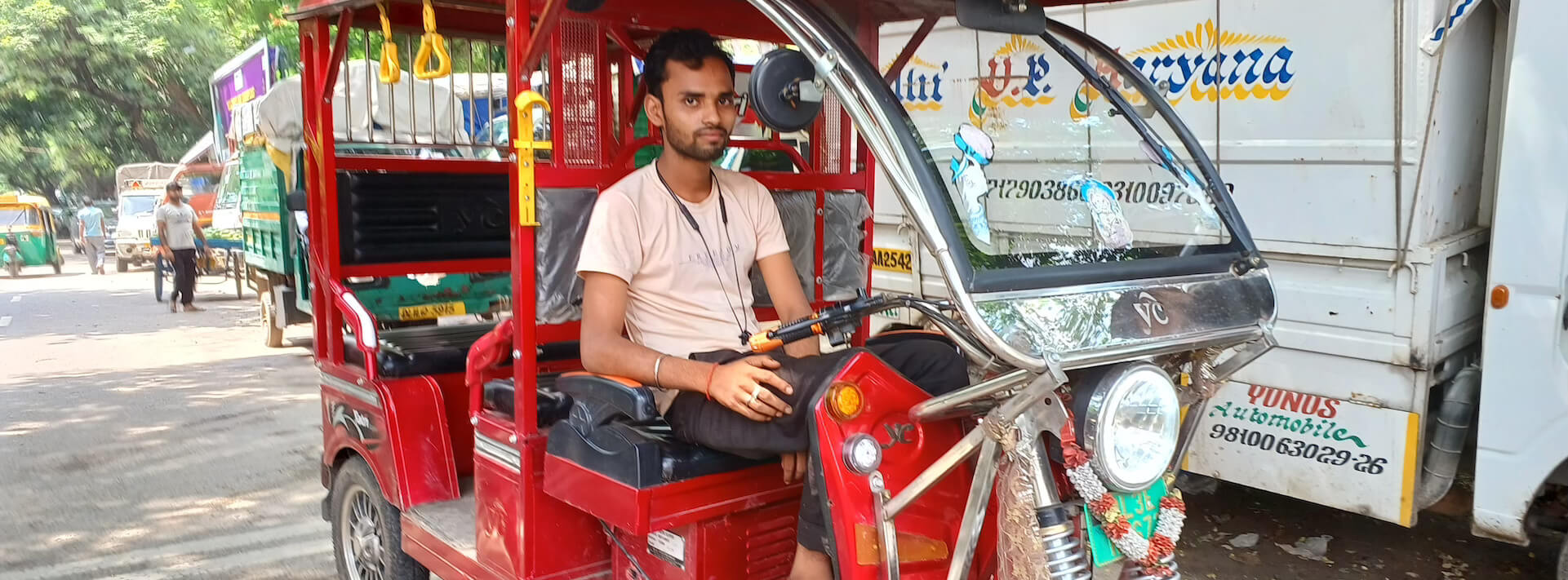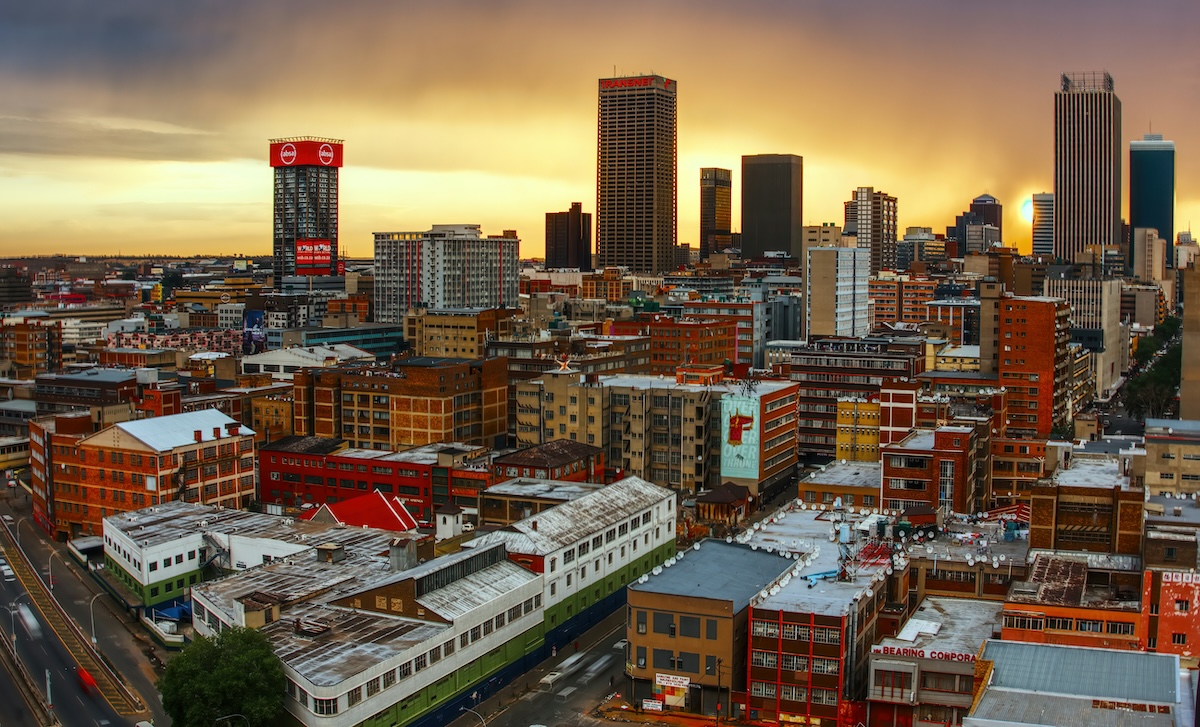ImpactAlpha, August 17 – American electric car makers like Tesla are making headlines over plans to bring their cars to India. But it isn’t sedans and SUVs steering India’s transition to electric mobility.
Less than 5% of vehicles sold in India last year were electric, but electric two-wheelers made up nearly 60% of those sales, compared to just 3% for four-wheelers.
Analysts estimate that three-wheelers make up nearly 80% of total EVs on India’s roadways.
“We are rooted in two-wheelers and three wheelers — these are the two ways in which India really commutes,” says Anup Jain of Mumbai-based Orios Venture Partners, an early-stage venture capital firm that is among the raft of investors pumping capital into India’s e-mobility transition.
EV startups in India last year raised more than $1.6 billion, up 117% from 2021. Amid a slow private investment market, climate tech, and EVs in particular, is one sector where investors seem to remain confident and active. Indeed, EV manufacturing, distribution, batteries and charging infrastructure collectively represent an estimated $200 billion investment opportunity between now and 2030.
To understand where investors are directing capital, it’s necessary to understand the myriad of vehicle types traversing India’s roadways and the roles they play in powering India’s economy, both formal and informal.
Favorable economics
The most widely owned electric vehicle in India is a three-wheeled, battery-operated automobile called the “e-rickshaw,” used mainly for public transport. A higher-powered version, called the “electric auto,” which goes faster and can carry a greater load, is also fast gaining traction, particularly among e-commerce and logistics companies that need to deliver goods in the narrow and congested roads of Indian cities. Amazon founder Jeff Bezos rode an electric auto in a 2020 video announcing the company’s plan to integrate the vehicles in Amazon’s India delivery fleet. Bill Gates was seen driving one in a video earlier this year.
“The economics sit very well in this category,” says Suman Mishra of Mahindra Last Mile Mobility, which manufactures both e-rickshaws and electric autos, commonly called “L5s”.
Annual sales of Mahindra’s electric three-wheelers has increased more than five-fold since 2019, Mishra says. The vehicles are easy to adopt because they don’t require specialized charge-points or sockets; they can charge overnight at designated parking lots or even at home. Subsidies from the government are also making these vehicles attractive. “There is a strong government focus on sustainability,” Mishra adds.
The Indian government wants at least 30% of all new vehicle sales by 2030 to be EVs. In 2015 it launched the Faster Adoption and Manufacturing of Hybrid and Electric Vehicles, or FAME, scheme, which provides financial support to both EV buyers and companies, such as those setting up charging stations. A second phase of the policy in 2019 seeks to encourage demand for EVs used for public transport, commercial vehicles, and privately owned registered two-wheelers.
Another key driver of the electric vehicle shift in India is rising fuel prices. In Delhi, for example, petrol prices have risen by nearly 50% since 2016. Drivers are gravitating toward EVs because they cost less to operate than vehicles run on fossil fuels.
Powering an electric scooter for 10 kilometers costs three rupees (about four cents) compared to 30 rupees for a gas-powered scooter. E-scooters cost twice as much to buy as the fuel-powered versions, but commuters or delivery drivers who run scooters for 100 kilometers per day quickly recoup the higher upfront cost, says Orios’s Jain. “You require less than 10 months to break even.”
The unit economics on e-rickshaws are even more attractive, he adds.
Investor enthusiasm
EV adoption is largely about “waiting for a good quality vehicle,” according to Arpit Agarwal of early-stage tech investment firm Blume Ventures. Blume expects that by 2030, 85% of all three-wheelers sold in India will be electric, while electric two-wheeler sales will rise 10x to a market size of $22 billion.
“We are at the cusp of takeoff,” says Agarwal.
As such, investors are placing bets with both new and established EV manufacturers. In March, the International Finance Corp. invested six billion rupees (about $70 million) in Mahindra to ramp up electric three-wheeler and small commercial EV production. Blume Ventures has backed newcomer Euler Motors, which makes electric three-wheelers used for cargo transport.
Ola Electric, launched by ride-hailing platform Ola, has raised $1.2 billion since launching in 2019 to manufacture electric vehicles and EV infrastructure, starting with scooters. Electric scooter maker Ather Energy raised multiple equity and debt rounds last year. Simple Energy recently raised $20 million for its low-cost electric scooters.
E-scooters face some headwinds to adoption because they’re relatively expensive, owing to higher material and battery costs; most e-scooter manufacturers have to import batteries. Ola Electric reported losses attributed to rising costs of materials. India’s government in May announced that it was reducing electric two-wheeler subsidies.
Investors like Blume see opportunities in EV infrastructure startups that will make it easier for drivers and fleet operators to make the switch from fuel-powered vehicles. Blume has backed ElectricPe, which is building an electric charging platform, and Yulu, which rents electric bikes. Blume and Orios both have backed battery swapping network operator Battery Smart, which recently raised $33 million. Gurgaon-based Zypp Electric earlier this year snagged $25 million for electric delivery fleets for India’s e-commerce companies.
E-rickshaw boom
One segment where investors remain on the sidelines: e-rickshaws. These popular vehicles, which resemble tall golf carts, are commonly seen zipping around the by-lanes of Delhi and other large cities, ferrying passengers to and from subway stations and bringing children to and from school.
E-rickshaws are typically made by assembling kits imported from China and are powered by lead-acid batteries. With a few exceptions like Mahindra, most are built in informal and disaggregated workshops.
“The e-rickshaws are thin on margins [and] low on differentiation,” says Orios’ Jain. “This makes them attractive for small scale manufacturers but unattractive for venture capital or private equity investors who look for a technology led moat in their investees.”
This low-speed, short-distance vehicle may be the fastest segment in India to make the electric transition, however, owing to e-rickshaws’ cost benefits relative to fuel-powered rickshaws. In Delhi, an e-rickshaw costs roughly 120,000 rupees ($1,500), which is at least 40% lower than the gas-powered version.
The number of e-rickshaws on India’s city and rural roadways has increased rapidly in recent years, mainly in the north, east and central parts of the country. Guddu Kumar Gaurav, a 23-year-old university student from Bihar, one of India’s poorest states, moved to Delhi in March to start driving an e-rickshaw his older brother had purchased. Gaurav runs the rickshaw on a fixed route of around one mile, between a metro station and a crowded neighborhood in south Delhi, picking up and dropping off passengers along the way, like a public bus. The e-rickshaw travels 15 miles per hour at most. His passengers pay only a few cents per ride, a fraction of what they would pay in a traditional rickshaw which is usually not shared.
Gaurav says he can earn around $400 a month and pays less than $40 a month to charge his rickshaw overnight at a nearby charging facility, leaving him with a good income. He has encouraged others in his village to move to Delhi to drive e-rickshaws for income.
“It also helps the environment,” he adds.











